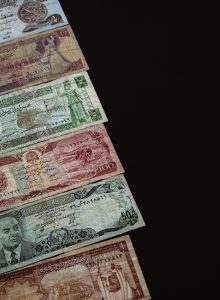Forex trading, also known as foreign exchange trading, is the buying and selling of currencies on the global currency market. This market, which operates 24 hours a day, five days a week, is the largest financial market in the world, with trillions of dollars in daily trading volume. Forex trading offers traders the opportunity to profit from fluctuations in currency prices, with the goal of buying low and selling high.
The Basics of Forex Trading
The forex market is made up of a network of banks, institutions, and individual traders who buy and sell currencies. Each currency is traded in pairs, such as the US dollar and the euro, with the exchange rate reflecting the price of one currency in terms of the other.
For example, if the exchange rate for the EUR/USD pair is 1.20, this means that one euro is worth 1.20 US dollars. Traders can profit from changes in this exchange rate by buying the EUR/USD pair when they believe the euro will strengthen against the US dollar, and selling the pair when they believe the opposite will happen.
Forex trading is typically done through a broker, who provides traders with access to the market and allows them to place trades. Brokers typically charge a spread, which is the difference between the buy and sell prices of a currency pair. Some brokers also charge commissions on trades, while others offer commission-free trading.
Forex trading can be done using a variety of trading platforms, including desktop software, web-based platforms, and mobile apps. These platforms provide traders with real-time quotes, charts, and technical analysis tools to help them make informed trading decisions.
Forex Trading Strategies
There are many different trading strategies used by forex traders, including technical analysis, fundamental analysis, and price action trading.
Technical analysis involves studying charts and indicators to identify patterns and trends in price movements. Traders may use tools like moving averages, support and resistance levels, and oscillators to help them make trading decisions.
Fundamental analysis involves analyzing economic and geopolitical factors that may affect currency prices, such as interest rates, inflation, and political events. Traders who use this approach may look at economic data releases, central bank statements, and news headlines to help them predict future price movements.
Price action trading involves analyzing price movements themselves, without relying on indicators or economic data. Traders who use this approach may look for patterns like candlestick formations, price channels, and breakouts to help them identify trading opportunities.
Risk Management in Forex Trading
Like any form of trading, forex trading involves risk. Traders can lose money if they make poor trading decisions, or if the market moves against them. To manage this risk, traders may use a variety of risk management tools, such as stop-loss orders, which automatically close out a trade when a certain level of loss is reached.
Traders may also use position sizing techniques to manage their risk. This involves calculating the appropriate size of a trade based on the trader’s account size and risk tolerance. Traders who use position sizing may only risk a small percentage of their account on each trade, which helps to limit potential losses.
Conclusion
Forex trading offers traders the opportunity to profit from fluctuations in currency prices. While it can be a challenging and risky endeavor, with the right knowledge and tools, traders can succeed in this dynamic and exciting market. By understanding the basics of forex trading, developing a trading strategy, and managing risk, traders can increase their chances of success and achieve their financial goals.





